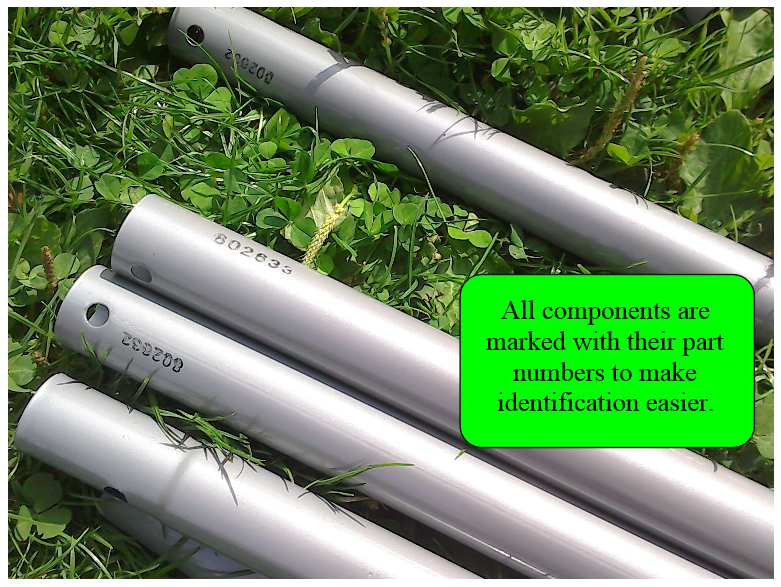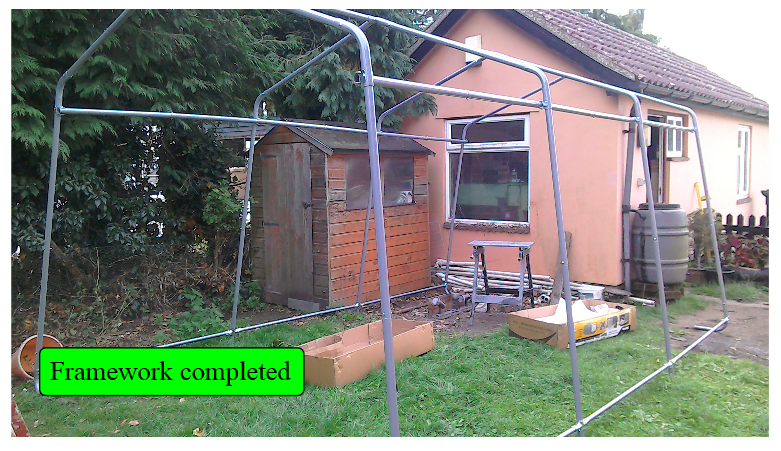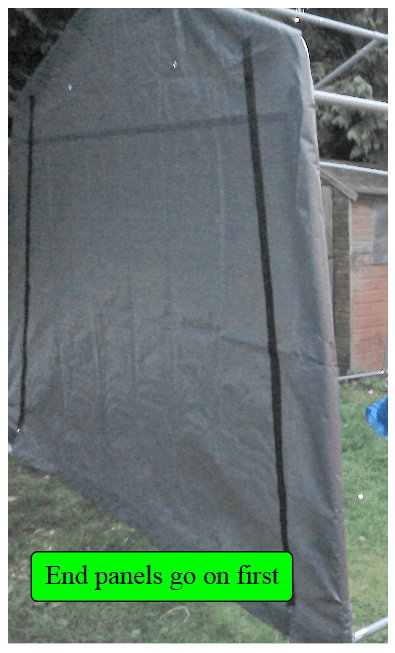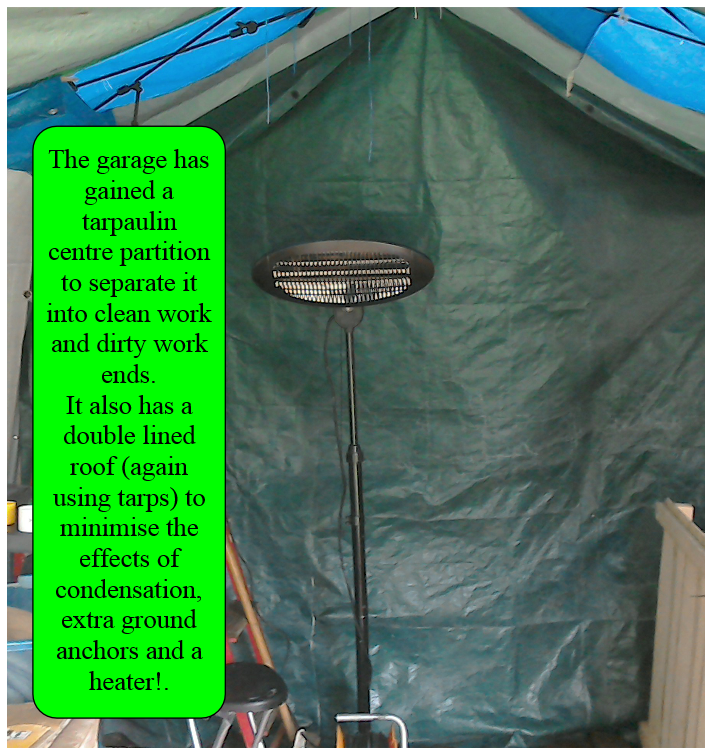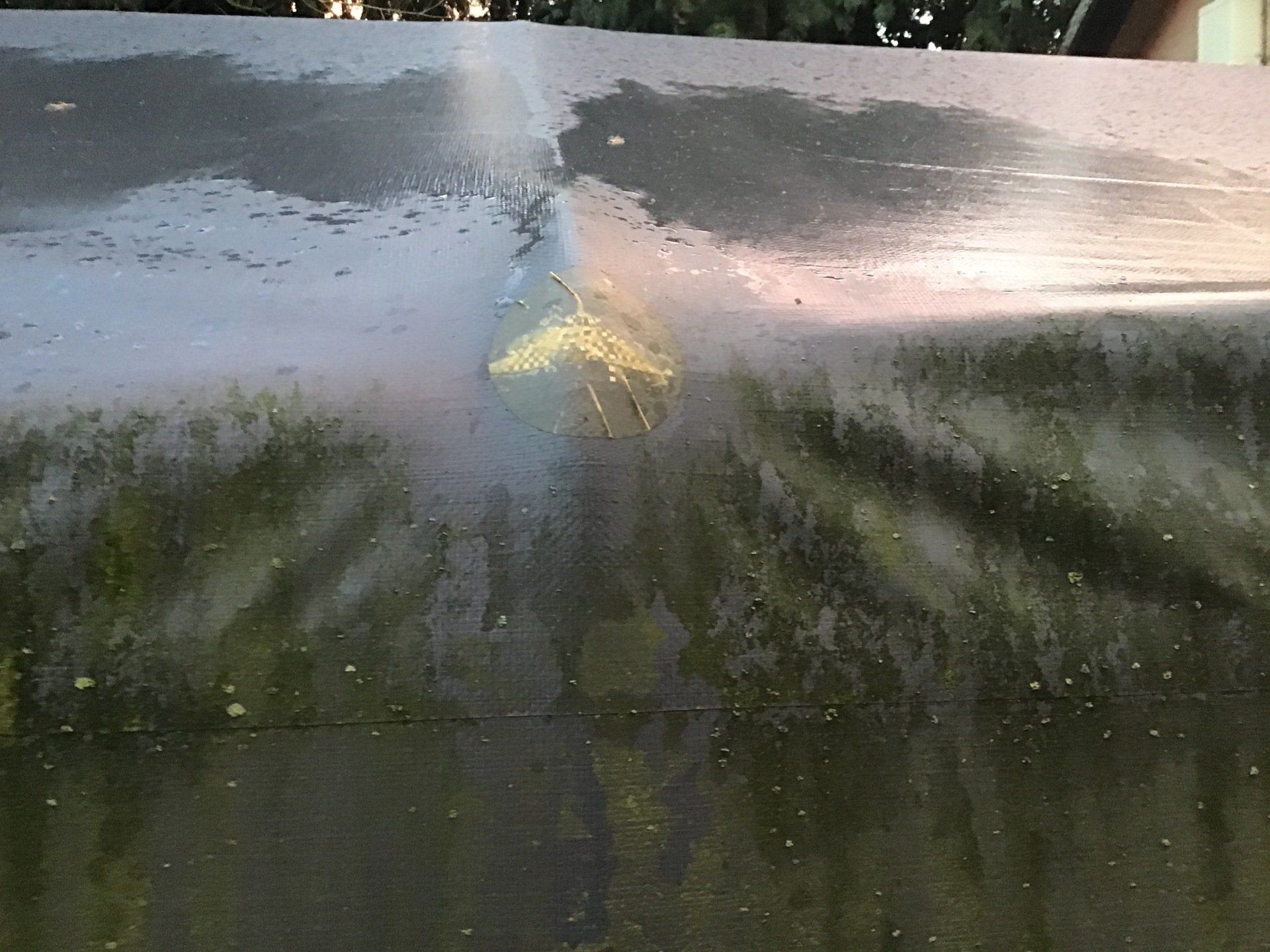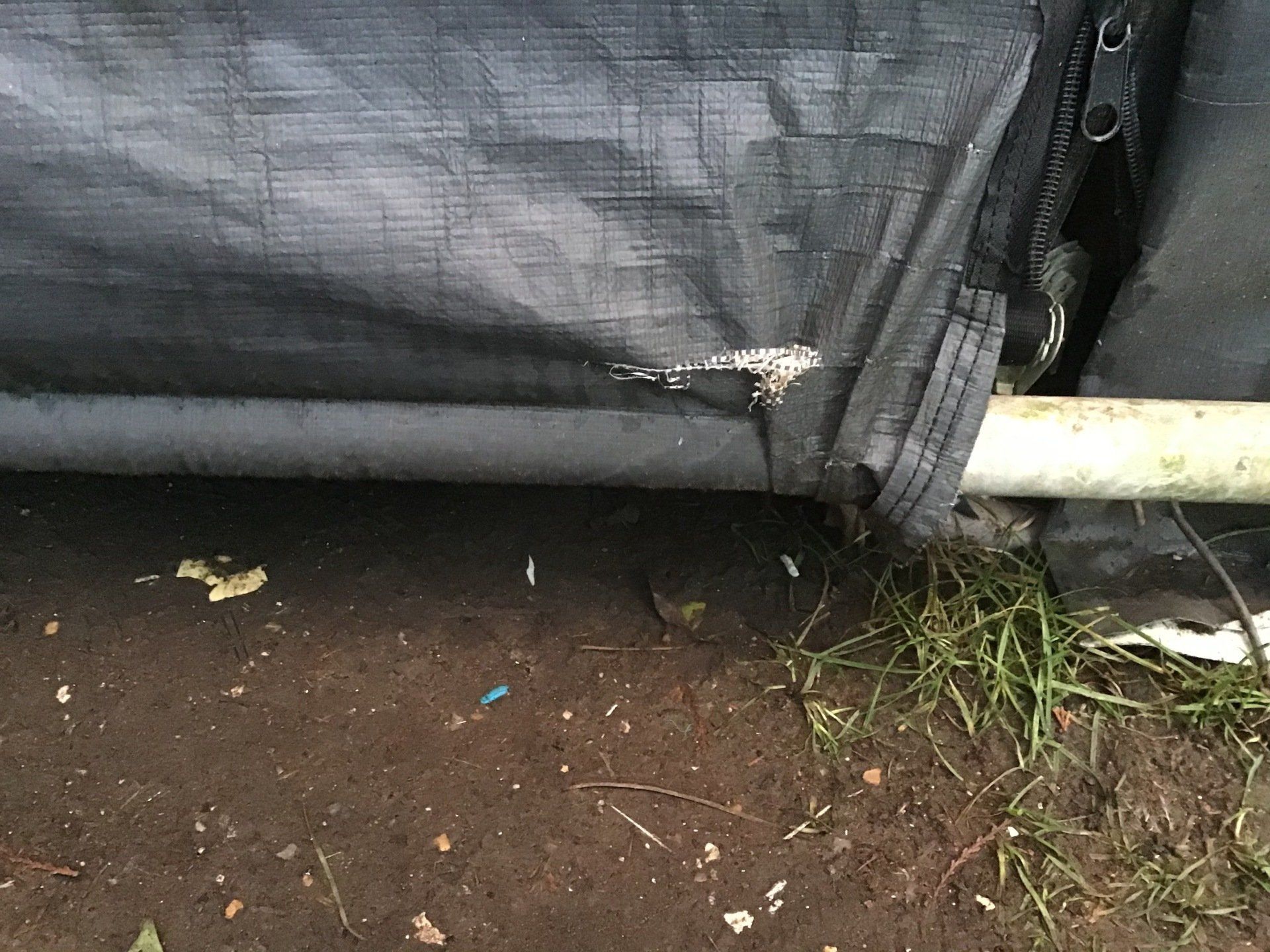The garage comes complete with ground anchors for use on grass. If you plan on using a different base, you need to provide your own suitable fixings. I put this up in the summer when the ground was rock hard, and getting the ground anchors in was the hardest job of the build. With the framework complete and anchored to the ground, the end panels go on next. It should be noted that the cover fixes to the frame, it is not pegged to the ground, so the only things stopping this blowing away in strong winds are the ground anchors, so make sure they are securely fixed.
The garage has a zipped door at one end and a solid panel at the other. These wrap around the frame hoops and are tensioned by means of ratchet straps. (All required straps are provided.)
With the end panels fixed and tensioned, the main cover can be heaved into place. It’s hard work with just one of you, but I got it in place in the end. Main cover wraps around either end of the frame and is (again) tensioned using ratchet straps attached to the foot of the frame. The cover also has pockets for the bottom frame rails to fit through. These frame rails can be pushed down to tension the cover before being fully tightened. And that’s it, garage built.
Conclusion
Well, the frame and cover seem to be very sturdy enough, and the tensioning mechanism works well. But, because the cover isn’t pegged to the ground, the bottom edges do flap around in the wind and the frame creaks ( a lot!).
End panels also bow inwards in the wind. This can be reduced by sliding a length of plastic waste pipe through the pockets sewn at the bottom of the end panels. (I used 40mm diameter, it’s a snug fit though, so a slightly smaller diameter maybe better if you can find it.)
There’s also quite a gap at the bottom of the end panels - so expect a through draft at ground level and leaves and other garden rubbish will be blown inside the garage. It does, however, keep you out of the wind and rain, and it has often been warmer in the ‘tent’ (as it is known here) than the brick garage this winter.
Winter did show up a couple of problems. Firstly, the frame (mostly the centre ridge pole) does get some condensation on it which then drips on whatever you have stored below. I used some old tarpaulins slung inside the roof to double line it (see pic below). I don’t know if it’s stopped the condensation forming on the frame, but at least now it doesn’t drip on my stuff!
Secondly, whilst the garage had withstood most of the strong winds over winter without problems, the gales we had in the New Year did cause some issues. The supplied ground anchors are fixed to the frame using a wire rope and clamp system. The design means that it’s really difficult to get them to fit without any free play. During the gale the whole structure moved a couple of inches. Extra anchors have now been fitted and the middle legs of the frame pegged down. (No mention of pegging these is made in the instruction manual and no pegs are supplied, but as the feet already have holes in them and given how far these legs were moving in the wind, I subsequently decided to peg them. Clarke does recommend that the garage cover be removed if severe winds are forecast - not too hard a job, but hardly convenient, and what are you supposed to do with the all things you have inside the garage?)
Dropping nuts and bolts in the grass, and the subsequent frustration of trying to locate them as they scurry to find cover, will soon lead you to the conclusion that some kind of flooring would be useful (at least for part of the floor-space). I’ve gone for 8ft x 4ft sheets of ¾ inch thick OSB3. (OSB apparently stands for oriented strand board not odds ‘n sods board - which is what it looks like it’s made from!)
The other draw back is security (although it’s no worse than keeping a bike outside under a cover). It’s not exactly burglar proof, is it? If you were going to keep bikes in it (or other valuables), I would recommend concreting in some ground anchors or finding some other cunning ways of being able to lock stuff up or bolt it down. I tend to use it just as a work area, and try not to leave anything of value in it overnight.
Having said all that, an instant garage like this is a fairly economical and quick way (you could put it up in a day) to get yourself some extra work space.


